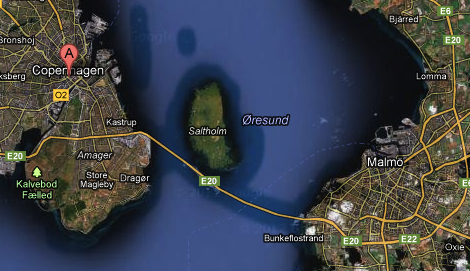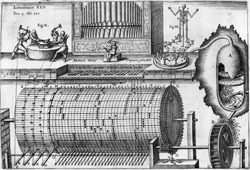Marc Abrahams's Blog, page 587
March 16, 2012
"Improbable After Dark" tonight in Edinburgh
It's Edinburgh tonight for the 2012 Ig Nobel Tour of the UK.
 This will be a special "Improbable After Dark" show, at Counting House, 36 West Nicolson Street. Expect an all-star cast of scientists, journalists, and entertainers each doing exceedingly-brief readings from genuine, improbable scientific studies. If you are easily offended by anything, do not come to this show.
This will be a special "Improbable After Dark" show, at Counting House, 36 West Nicolson Street. Expect an all-star cast of scientists, journalists, and entertainers each doing exceedingly-brief readings from genuine, improbable scientific studies. If you are easily offended by anything, do not come to this show.
It features: Marc Abrahams; Sergio Dalla Sala (Professor of Human Cognitive Neuroscience); Sian Bevan (Comedian and Writer); Simon Gage OBE (Director of the Edinburgh International Science Festival); Colin Macilwain (writer for Nature and Science); Peter Harrison (writer/performer); and Others to be announced. With a preface by Richard Wiseman. Organized by Sid Rodrigues and Steve Farrar, co-sponsored by Skeptics in the Pub.
BONUS: Dundee: And on Saturday night: Dundee, the most McGonagallistical show of the entire tour, and also the final show of the UK tour. A few tickets are still available for that show — but act quickly if you want to snag one.
BONUS: India: An entire clutch of Ig Nobel Prize winners is gathering in Pilani, India for two days of Ig Nobel talks and demonstrations at the APOGEE festival.
BONUS: Scandinavia: And then… the Ig Nobel Tour of Scandinavia begins next week.

March 15, 2012
Punk, Post-punk and Socrates
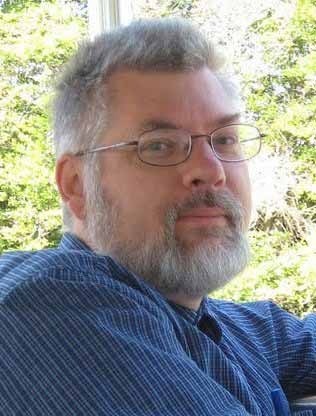 It's possible that it was none other than Socrates himself who (according to Plato) first outlined the inherent problems regarding classifications. He chose, as an example, the classification of bees.
It's possible that it was none other than Socrates himself who (according to Plato) first outlined the inherent problems regarding classifications. He chose, as an example, the classification of bees.
'What is the nature of the bee? […] Do bees differ as bees? […] Tell me, what is the quality in which they do not differ, but are all alike' (Plato 1892: 29).
Such intrinsic categorising predicaments are probably as relevant today as they were in Ancient Greece. Take for example the classification of pop bands into the 'Post-Punk' genre. Should 'Throbbing Gristle' be on the list? And what about 'The Desperate Bicycles'*? These two specific questions are tackled (with reference to Socrates' bees) in an article by Theodore Gracyk, (pictured left) Department Chair and Professor of Philosophy,Minnesota State University Moorhead, US, in his article for the inaugural issue of the scholarly journal Punk & Post-Punk.
Professor Gracyk points out that :
"Within popular music, post-punk represents a shift away from punk's romantic expressionism to a modernist commitment to use verbal-musical interplay for the expression of ideas, particularly the idea of democratization. As a working out of aesthetic theory, its commitments correspond closely to Immanuel Kant's model of genius."
His paper 'Kids're Forming Bands: Making Meaning in Post-Punk' (Punk & Post Punk, Volume 1, Number 1, 8 September 2011 , pp. 73-85) can be read in full via this page:
* Corrigendum : As fans of 'The Desperate Bicycles' will know, their 1977 single was titled : 'The medium was tedium' and not 'The Medium is the Tedium' as cited in the thesis.
BONUSes
1) John Joseph Lydon (a.k.a. Johnny Rotten) posing with Photoshopped bees – substantially similar to, though not identical with, those discussed by Socrates. (Photo courtesy johnlydon.com)
2) And, to end, what could be more appropriate than a forthright punk statement from one of the no-nonsense ensembles that kicked off the whole genre?

The art of short-circuiting (a metaphorical coconut)
Qubais Reed Ghazala explains how he builds new kinds of instruments by carefully bending, twisting, or otherwise deforming or even breaking things that were designed to be other than what Ghazala eventually had in mind for them. He wrote a study:
"The Folk Music of Chance Electronics: Circuit-Bending the Modern Coconut," Qubais Reed Ghazala, Leonardo Music Journal, December 2004, Vol. 14, Pages 97-104. Ghazala writes:
The author describes the philosophy and art of circuit-bending: shorting out conventional electronic devices to reveal unexpected sound and music. Starting from his first foray into chance electronics during his junior high school years, he details both his method of working and the wealth of instruments that have resulted.
In this video, he demonstrates:

March 13, 2012
Octopus goes twice as fast, with a wheel
How fast does an octopus typically run in an exercise wheel? That has yet to be determined. But one value is reported in the study:
"Cutaneous Respiration in Octopus Vulgaris," J.J. Madan and M.J. Wells, Journal of Experimental Biology, vol. 199, pp. 2477–2483 (1996). The authors, at the University of Cambridge, UK, explain, citing two previous studies, one of which they were involved with directly:
"An octopus running in an exercise wheel consumes about two and a half times as much oxygen as a resting animal."

Oranges & Agent Orange & navel navel size
Disambiguation preamble : 2,4-D should not in any way be confused with 2D:4D
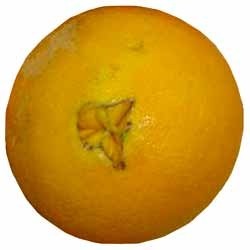 Some people feel that the 'navels' of Navel Oranges are just too big. What's to be done? Giverson Mupambi, of the Agriculture (Horticultural Science) department at the Faculty of AgriSciences, Stellenbosch University, South Africa, wondered if a liberal application of 2,4-dichlorophenoxyacetic acid, 2,4-D , (coincidentally made famous for its use as a core component of Agent Orange) might do the trick.
Some people feel that the 'navels' of Navel Oranges are just too big. What's to be done? Giverson Mupambi, of the Agriculture (Horticultural Science) department at the Faculty of AgriSciences, Stellenbosch University, South Africa, wondered if a liberal application of 2,4-dichlorophenoxyacetic acid, 2,4-D , (coincidentally made famous for its use as a core component of Agent Orange) might do the trick.
As part of his masters degree thesis he set about a rigorous experimental investigation. His paper :'Studies to reduce the size of the navel-end opening of navel oranges' describes the effects of 2,4-D, which, sadly for those who feel that their orange navels are too big, was less than 100% effective.
"Internal fruit quality was not affected by the treatments, however, the fruit developed a coarse rind due to enlarged oil glands and the styles stayed attached on the fruit until harvest. Therefore, although 2,4-D reduced fruit splitting, it cannot be recommended at the timings and concentrations evaluated."
Disambiguation postamble: Navel Oranges should not in any way be confused with Naval Oranges

Theories on both sides of the Copenhagen-Malmo bridge
Bold theories have arisen on each side of the bridge [see image below] that joins Copenhagen, Denmark and Malmo, Sweden.
In Copenhagen, a new theory that rising carbon dioxide concentration in the atmosphere has caused an increase in the percentage of humans who are obese.
In Malmo, the theory a few years ago that putting heels on shoes gave rise to schizophrenia.
(Thanks to investigator Gary Dryfoos for bringing the carbon dioxide theory to our attention.)
BONUS: The Ig Nobel tour of Denmark and Sweden begins next week.

March 12, 2012
How Machiavellian are car, stock and real estate salespersons?
By reputation, stockbrokers have manipulative personalities. So do people who sell cars or buildings. Professor Abdul Aziz took the measure of these groups of professionals, hoping to see whether each lives up or down to the legend.
Aziz, who teaches business at Morgan State University in Baltimore, Maryland, together with colleagues published three studies a decade ago: Relations of Machiavellian Behaviour with Sales Performance of Stockbrokers; Machiavellianism Scores and Self-rated Performance of Automobile Salespersons; Relationship between Machiavellianism Scores and Performance of Real Estate Salespersons. All appear in the journal Psychology Reports.
Aziz explains that a Machiavellian person is someone who "views and manipulates others" for "personal gain, often against the other's self-interest"….
So begins this week's Improbable Research column in The Guardian.

March 11, 2012
Solution to last issue's puzzler
'Use Lard' redaction mystery
'Use Lard a North Dakota Product' was a July 1953 publication of the North Dakota Agricultural College,
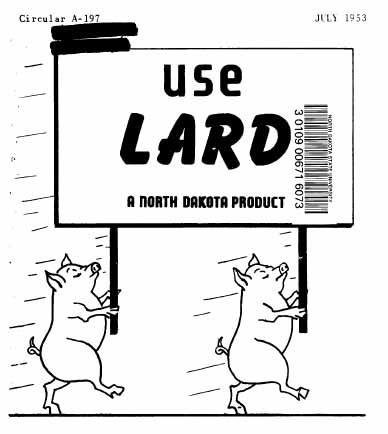
A copy is available online courtesy of the North Dakota State University Institutional Repository. But Improbable's attention is drawn to the redaction at the top left hand corner of the document.
Can any readers solve the mystery for us? After all this time, is there still something officially under wraps regarding North Dakota Lard?
Any comments appreciated.

Steve Colgan's insider's peek at the Ig Nobel London events
Steve Colgan, one of the stars of the Ig Nobel UK Tour events in London and Teddington, prepared his insider's look at both events and at some of the preparatory meetings. Full details, with lots of good photos are in his blog. Here are a few bits of it:
The other reason for me visiting the Wellcome Collection and Library was to meet several friends for lunch. These included James Harkin, head of research for the BBC TV show QI and Dan Schreiber, co-producer of QI's sister show The Museum of Curiosity, which goes out on Radio 4. We were joined by Sid Rodrigues, organiser of the international Skeptics in the Pub movement, science writer and Guardian columnist Mo Costandi and Jonathan Webb from the Science Media Centre. We were there to meet Marc Abrahams to discuss the Ig Nobel Prizes UK Tour for which some of us would be speakers at the London events….
[this photo shows part of the Imperial College audience gathering before the show there. John Hoyland of New Scientist magazine is the man at the lower left:]
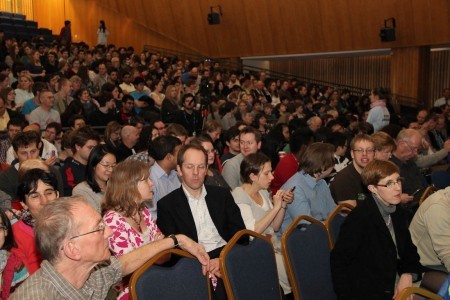
The UK tour this year included two London-based events, the first at Imperial College in Kensington and the second at the National Physical Laboratory (NPL) in Teddington. The Imperial College event took place in the 800-seater Great Hall of the Sherfield Building and was completely sold out. The speakers included Oxford University mathematician Mason Porter discussing his paper on synchronisation in cows, Ig Nobel winner Mirjam Tuk on her paper that explores improved decision-making when you have a full bladder, New Scientist magazine's John Hoyland with some extracts from its ever-excellent Feedback pages, and myself talking about how police officers once used a form of cryptic hide-and-seek during the 'dead' hours on night duty (between 3am and 5am) as a memory aid to learning the fastest routes to various locations. [This photo shows Mirjam Tuk doing her talk:]

As a bonus we had Professor Andrew George from Imperial reading some terrible poetry by William Topaz McGonagall. A tremendously fun evening…
[This photo shows Professor George tormenting both the audience and himself with a reading of atrocious McGonagall poetry:]
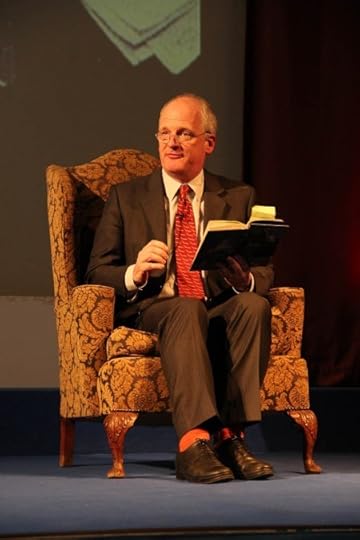
The second event was the Ig Nobels After Dark on Saturday. This was held at the NPL and a few of us were lucky enough to have a tour of some of the laboratories beforehand. The NPL's name is a little confusing and it was explained to us by our host, Andrew Hanson, that it would probably have been more appropriately named the National Measurement Laboratory as that's what they do; they measure things….
[This photo is from the NPL tour -- several of us in a hemi-anechoic chamber:]
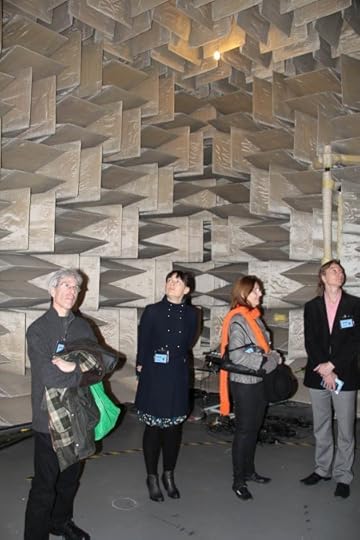
Then it was on to the evening event where an eclectic mix of readers entertained the audience with extracts from a selection of obscure and unintentionally hilarious research papers. The readers were myself, James Harkin (QI writer), Dan Schreiber (Producer Museum of Curiosity), Ross McFarland (Wellcome Institute Library), Helen Keen (Comedy writer and performer), Stuart Clark (Astrophysicist and author), Chloe Kembery (Head of media relations Natural History Museum), Laurie Winkless (Higher research scientist National Physical Laboratory), Alasdair Kergon (Consulting Software Engineer, Red Hat Ltd), Alom Shaha (Science teacher and author), Helen Arney (Comedian and musician), Alok Jha(Author and Science Correspondent for The Guardian) and Ruchir Shah (Public Library of Science).
The subjects covered included fellatio in fruit bats, collapsing Glasgow toilets, why ovulating lap dancers get more tips, beetles that have sex with beer bottles,termination of intractable hiccups by digital rectal massage, and an eye-watering dissertation on how to free a trapped penis from a zipper – accompanied by mime. My reading was from a paper entitled 'Spermicidal potency of Coca-Cola and Pepsi-Cola' and is a perfect example of the kind of paper that attracts an Ig Nobel Prize. The paper, at first, seems rather silly; a bunch of scientists putting human sperm into different kinds of Cola to assess whether it affects the sperms' motility and/or potency. However, there is a serious reason behind this; douching with Cola is used by women, particularly in developing countries, in the belief that it is an effective post-coital contraceptive and it's been going on since the 1950s. What the scientists wanted to know is whether it is actually effective or not so that doctors, missionaries and health workers can best advise women about its efficacy. If you're interested, Diet versions of the drinks are the most effective. However, it is not a good contraceptive as some sperm will be in the oviducts within seconds of ejaculation plus the act of douching and the gas in the Cola can actually push the sperm closer to the cervix. But it's a wonderful example of what The Annals of Improbable Research and the Ig Nobels are all about – Research that makes people laugh and then think.

Marc Abrahams's Blog
- Marc Abrahams's profile
- 14 followers












